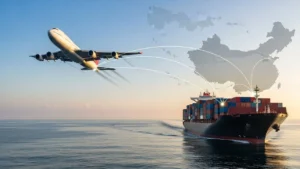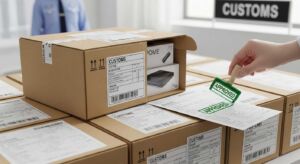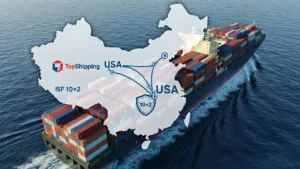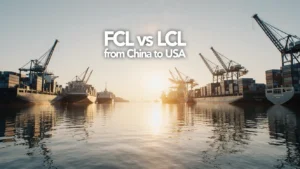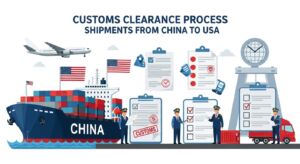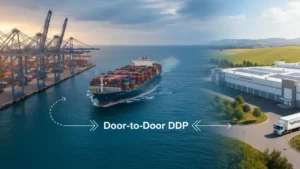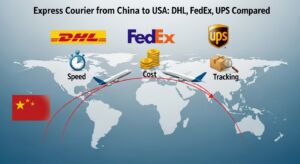Freight transportation in the international markets is always associated with some obstacles, especially if the entrepreneur has little experience.
However, due to the rapid development of freight tracking systems, nowadays trade with China became much easier and safer.
You can avoid all risks involved in shipping from China just by selecting the right freight tracking system.
In this article, we are going to bring everything you need to know about China’s freight tracking solutions under one roof:
from explaining the benefits of using a tracking system to offering suggestions on how to choose the best among them to fit your needs, we will cover it all.
By the time you are through reading this article, you’ll know just how these systems can optimize your shipment process for increased visibility and, consequently, enhancement in general business functions.
For any questions about freight tracking systems in our company, Topshipping, reach out to us. Please feel free to inquire for more information or personalized support at any time.
Why Use A Freight Tracking System?
1. Better Visibility, Greater Transparency
A freight tracking system provides real-time updates about the location and condition of your shipment.
The transparency afforded by freight tracking allows you to trace the whole route of your cargo-from leaving to arrival-and, therefore, let you stay informed about the status of your cargo at any moment in time.
2. Greater Efficiency
Employing a freight tracking system allows you to get the best from your logistics.
Accordingly, automatic updates and notifications will facilitate inventory management, cut delays, and allow you to adjust supply chain activities with ease-saving you a lot of precious time and reducing the use of resources.
3. Improved Safety
The risk of thefts or loss is reduced by freight tracking systems.
Since your consignment is tracked in real time, it becomes quickly noticeable in events of theft or other types of deviation from the intended route, which can further enable someone to take urgent protection measures.
4. Better Customer Satisfaction
Timely, accurate order information improves the customer experience.
A well-implemented tracking system allows you to give extremely accurate delivery estimates and keep your customers updated regularly, thereby improving satisfaction and brand loyalty.
5. Cost Savings
Effective tracking systems reduce operation costs by preventing delays, loss, and theft and also suggesting the most viable delivery routes.
This, in turn, means reduced shipment costs and higher profitability for the business.
6. Data and Analytics
Because of their regular activities, freight tracking systems tend to generate information that might be pretty useful to analyze in an attempt to optimize your logistics strategy.
By analyzing overall trends in the data and performance indicators, you understand where your process improvement opportunities lie and make smart decisions about improving shipping processes.
7. Regulatory Compliance
International shipping is subject to a host of rules and standards.
Freight tracking systems establish due records and provide the correct documentation for customs and other regulatory bodies that your company needs to maintain for regulatory compliance.
Integrating a freight tracking system into your logistics will boost efficiency, safety, and customer satisfaction.
Want to make your shipping more efficient? Apply an advanced capability freight tracking system.
If you need more information or would like to learn about Topshipping tracking solutions, please do not hesitate to contact us.
Key Advantages of Using a Freight Tracking System
1. Real-Time Visibility
Various freight tracking systems allow you to stay updated in real-time concerning the whereabouts and current status of your cargo.
This will enable you to trace and track your goods right from the starting of the journey until it reaches you, keeping you cool and giving you sufficient time to rectify the glitches when they appear.
2. Increased Efficiency
Automated tracking makes the logistic operations even smoother.
With these systems, shipment management has become smooth and speedy, thereby giving rise to quick delivery times and minimal operational hitches.
3. Improved Security
Tracking systems add a higher level of security to your shipments.
Constant tracking enables you to catch out deviations or any suspicious activity that can be immediately acted on to avoid theft, loss, or any other form of damage.
4. Customer Service
Thus, accurate and timely information about shipment status enhances customer satisfaction.
In this respect, the freight tracking system permits you to give the exact estimation of delivery, updated information to the customers regarding their status of delivery, thereby enhancing their overall experience and confidence in your service.
5. Cost Reduction
Optimization of routes taken by vehicles to effect delivery, coupled with reduced delays, are some of the factors influencing cost reduction in shipping by using freight tracking systems.
Increased efficiency and reduced loss or damage eventually help make huge cost savings over time.
6. Data Analytics and Insights
Freight tracking systems capture critical data from which meaningful analyses can be drawn to further help you in enhancing your logistics strategy.
From the insight of this data, you will be able to know what trend is taking place, and you can also optimize routes for making wiser shipping decisions.
7. Regulatory Compliance
Precise tracking and documentation are vital in meeting international shipping regulations.
Freight tracking systems ensure that records are well kept and provide the necessary documentation for customs and regulatory authorities.
All the real-time tracking information allows for better management of inventories.
By precisely knowing the location and status of your shipment, you can plan and adjust your inventory level to reduce the probability of overstocking or stockouts.
8. Proactive Problem Solving
With the immediate availability of tracking information, you may proactively solve the upcoming problem before it becomes huge.
This helps in minimizing disruptions in supply and keeps the wheels of goods in motion.
9. Competitive Advantage
Competitive advantage is given by the market through an advanced freight tracking system.
Reliable shipping at reasonable prices and, where possible, transparency of the service with total efficiency brings more customers and establishes loyalty for a longer period.
An advanced freight tracking system can change your whole logistics pattern to efficiency, security, and customer friendliness.
For further information on how Topshipping’s advanced freight tracking solution empowers your business, contact our team at
Main Technologies for Freight Tracking System
Freight tracking systems depend on advanced technologies that help in making the handling of logistics more visible and efficient. There are primarily three important technologies in this regard:
GPS: Global Positioning System. GPS technology allows for real-time tracking of shipments through location data. This enables not only logistics companies to trace the movement of goods right from their origin to destination but also their customers. This improves transit transparency and helps optimize routes for travel.
RFID-Radio Frequency Identification: RFID is based on the use of radio waves to perform automatic identification and tracking of tags attached to freight. In such tags, information with respect to location and other parameters on the status of the cargo can be stored. RFID systems can offer quick scanning and inventory management, hence minimizing human errors and improving operations efficiency.
IoT (Internet of Things) : IoT technologies are installations of devices and sensors that connect to the internet for continuous monitoring of freight conditions. The temperature sensor, for example, monitors perishable cargo within specified parameters. IoT-enhanced data collection and insight analysis further facilitated proactive decision-making on supply chain performance.
Put together, these technologies will revolutionize freight tracking, facilitating real-time tracking, efficiency in all spheres of transportation, and the safety of cargo arrival-thus achieving customer satisfaction in logistics.
Cost Analysis of International Freight Tracking Systems
The cost analysis of international freight tracking systems involves a variety of costs to be incurred in implementing and maintaining the technologies. Some of the major elements that constitute such an analysis include the following:
Initial Investment:
This includes the cost of buying the hardware for tracking, like GPS devices and RFID tags, along with software development or licensing costs of the tracking platforms. Organizations will also have to incur the cost of integrating these technologies with existing logistics systems.
Operational Costs:
These are the expenses that keep on recurring for the continuity of the tracking system. These include data storage, updating of software, and technical support. Another consideration is the training of staff on a regular basis on how to use the tracking system effectively.
Shipping Costs:
Improved visibility due to tracking systems may translate to better routing and avoidance of delays, hence a reduction in shipping costs. However, firms have to balance such economies against the capital and maintenance costs of the tracking technology.
Risk Management:
Efficient tracking can reduce losses and damages since there would be real-time visibility, which would result in lower insurance premiums as well as fewer claims.
Ultimately, cost analysis would enable organizations to make a proper judgment about the return on investment for international freight tracking systems and thus make correct decisions that might lead to improved operational efficiencies and customer service.
Final Takeaway
Which cargo tracking system you will use depends on what exactly you need and how much money you can invest in that. GPS tracking is a perfect variant for a low budget when you just need to know where something is. An RFID system strikes the golden middle in terms of price and functionality. IoT solutions will be the most expensive, but they will also provide you with insights and security unique to this technology. For an individual consultation, please contact the Topshipping team for the best solution for your business.







